Stretched canvas art is created from a giclée print on canvas (instead of paper), and like a traditional painting, the canvas is hand-stretched over a solid wood frame. It can be mounted in a float frame, or displayed on its own. The sides of the canvas are finished in a solid color that complements the artwork, creating a modern masterpiece ready to hang on your wall, without a frame.
-
A Dash for the Timber ☳ Remington ☵ Canvas
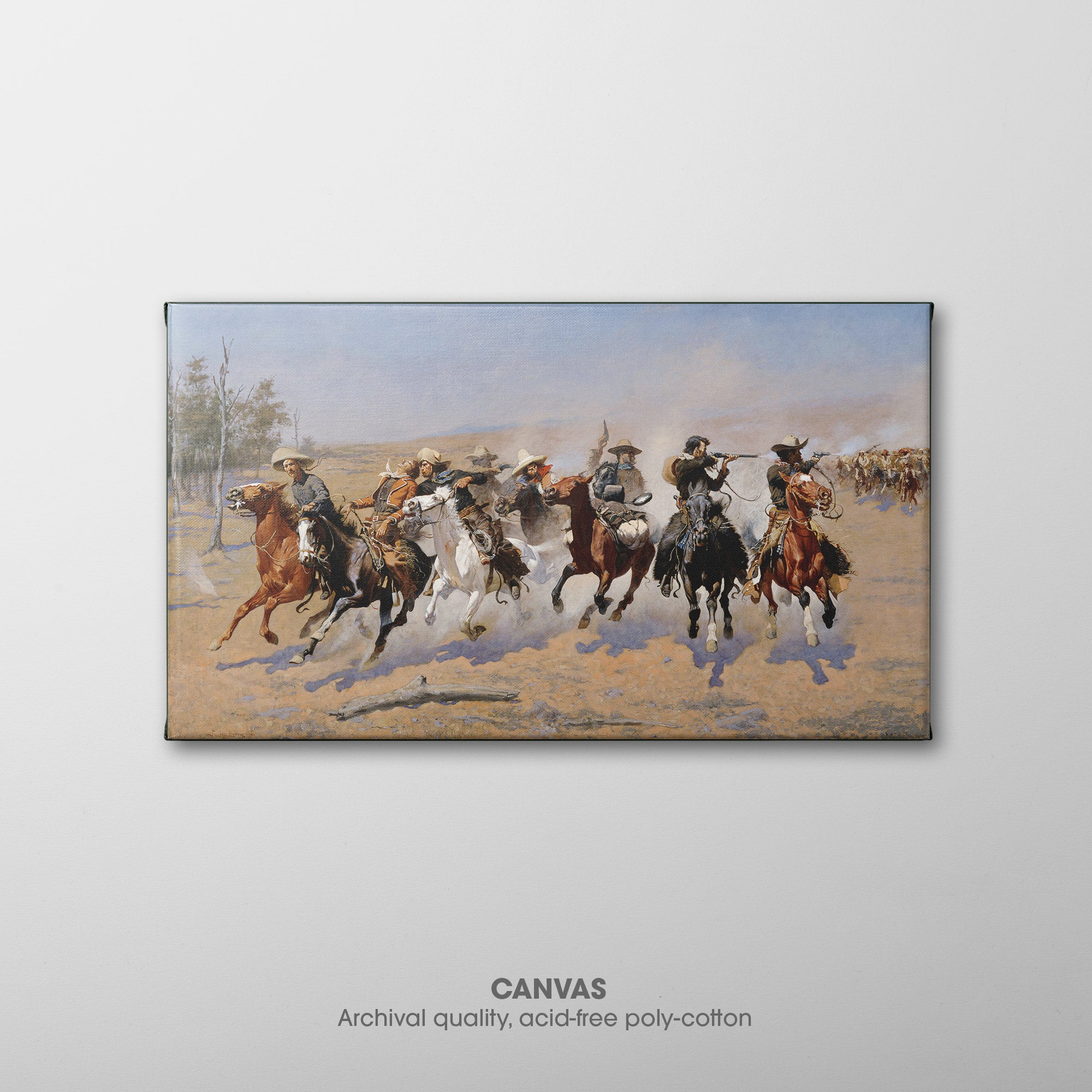
 A Dash for the Timber (1889) by Frederic Remington depicts eight men on horseback pursued by a group of Native Americans. Having not yet reached the trees, with one man struck by a bullet, it is not clear who will emerge victorious. ➵
A Dash for the Timber (1889) by Frederic Remington depicts eight men on horseback pursued by a group of Native Americans. Having not yet reached the trees, with one man struck by a bullet, it is not clear who will emerge victorious. ➵◰ Canvas Reproductions
⧈ Framed Art Prints -
Hunter's Supper ☲ Remington ☶ Canvas
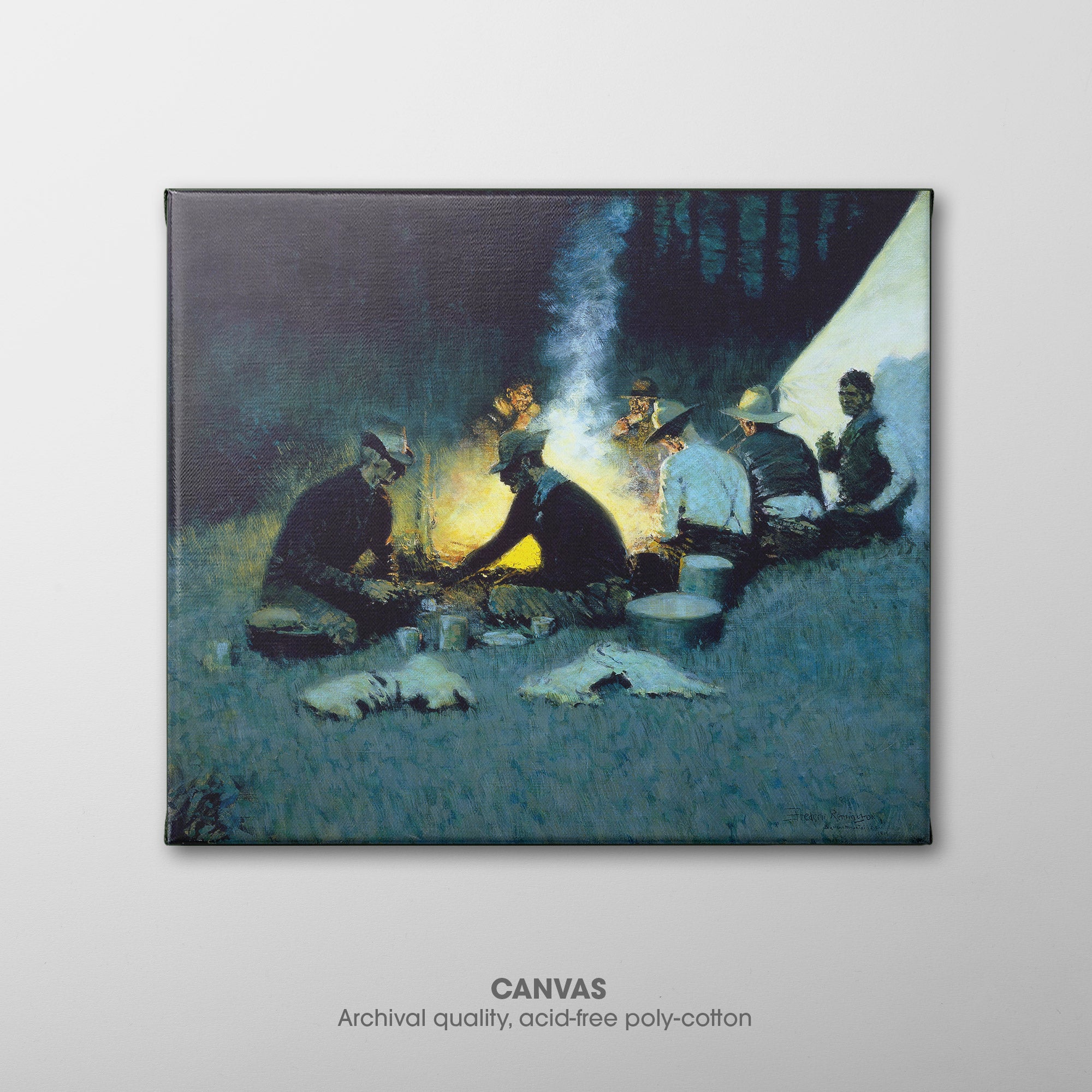
 Hunter's Supper (1909) by Frederic Remington, also known as Hunters' Camp in the Big Horn, depicts a group of frontiersmen gathered around a campfire at dusk, showing a moment of relaxation surrounded by a harsh frontier. The orange and red glow of ➵
Hunter's Supper (1909) by Frederic Remington, also known as Hunters' Camp in the Big Horn, depicts a group of frontiersmen gathered around a campfire at dusk, showing a moment of relaxation surrounded by a harsh frontier. The orange and red glow of ➵◰ Canvas Reproductions
⧈ Framed Art Prints -
The Buffalo Signal ☴ Remington ☳ Canvas
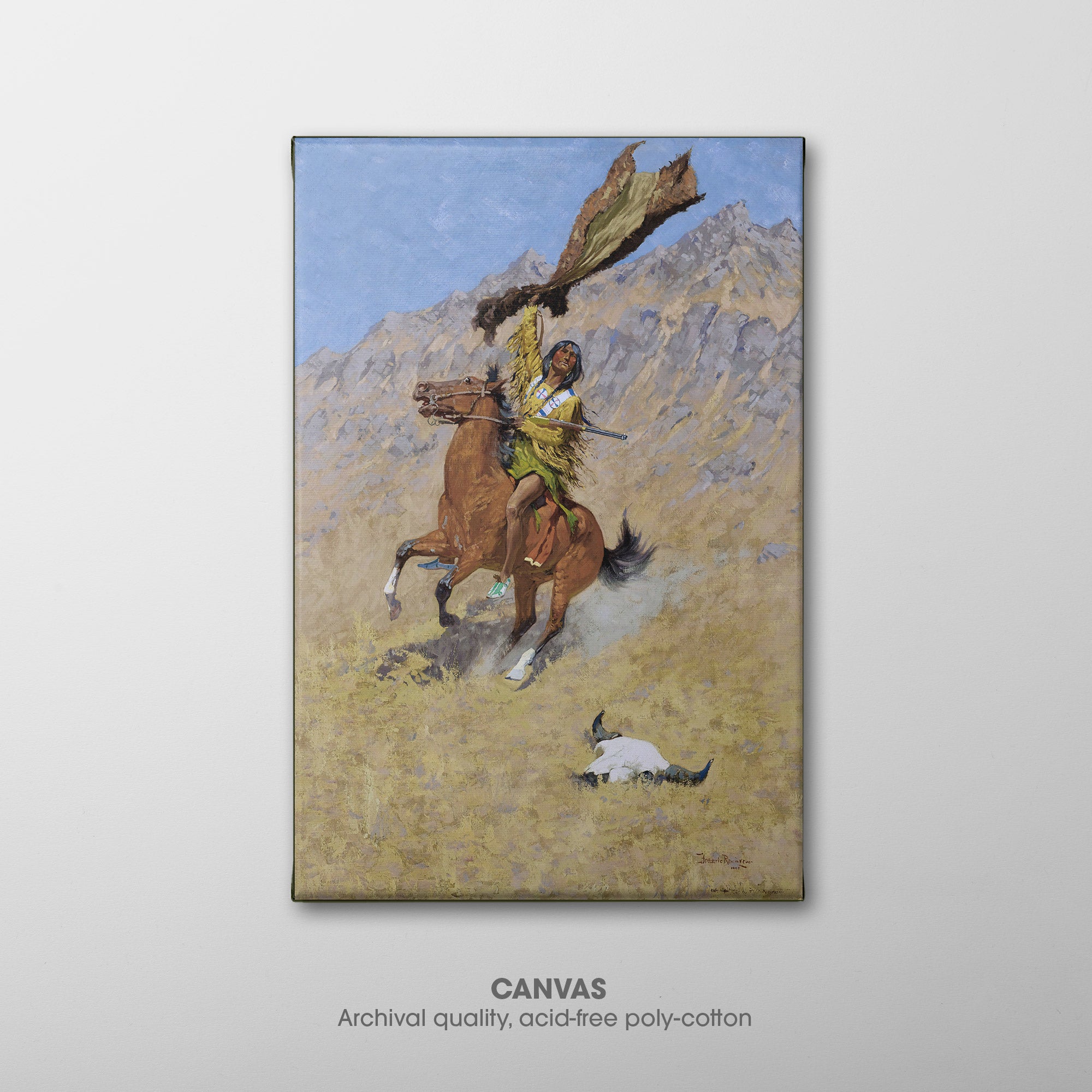
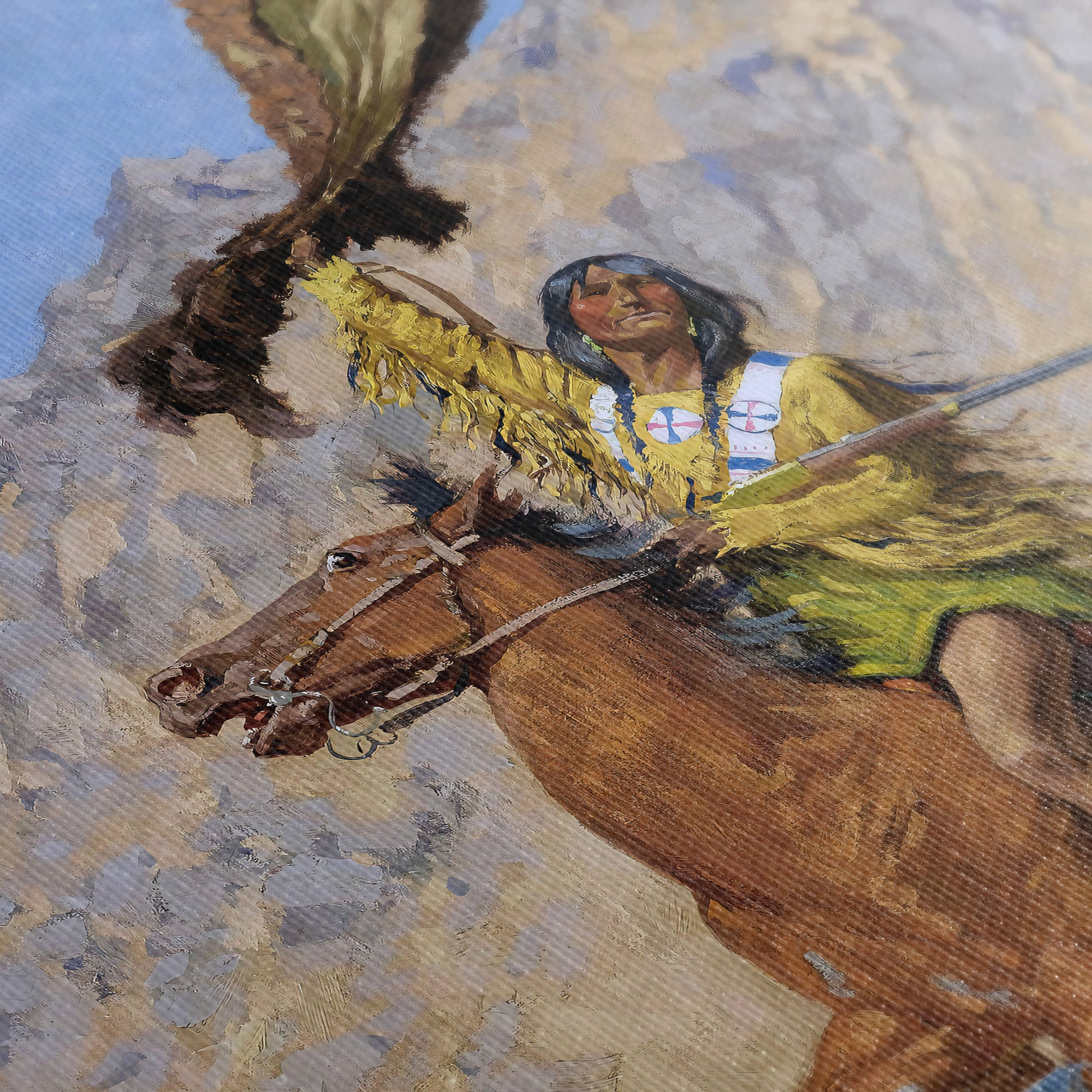 The Buffalo Signal (1900) by Frederic Remington, also known as If Skulls Could Speak, depicts an Indian buffalo scout on horseback signaling his tribesmen. The horse rears in alarm as he has been pulled to an abrupt halt to wave the buffalo ➵
The Buffalo Signal (1900) by Frederic Remington, also known as If Skulls Could Speak, depicts an Indian buffalo scout on horseback signaling his tribesmen. The horse rears in alarm as he has been pulled to an abrupt halt to wave the buffalo ➵◰ Canvas Reproductions
⧈ Framed Art Prints -
A Mexican Vaquero ☶ Remington ☰ Canvas

 A Mexican Vaquero (1890) by Frederic Remington depicts a vaquero, a Mexican horseman similar to the American cowboys, sitting on his horse, outlined by the pale blue sky. A trip to Mexico in 1889 provided Remington with a wealth of firsthand material ➵
A Mexican Vaquero (1890) by Frederic Remington depicts a vaquero, a Mexican horseman similar to the American cowboys, sitting on his horse, outlined by the pale blue sky. A trip to Mexico in 1889 provided Remington with a wealth of firsthand material ➵◰ Canvas Reproductions
⧈ Framed Art Prints -
The Cowboy ☷ Remington ☳ Canvas
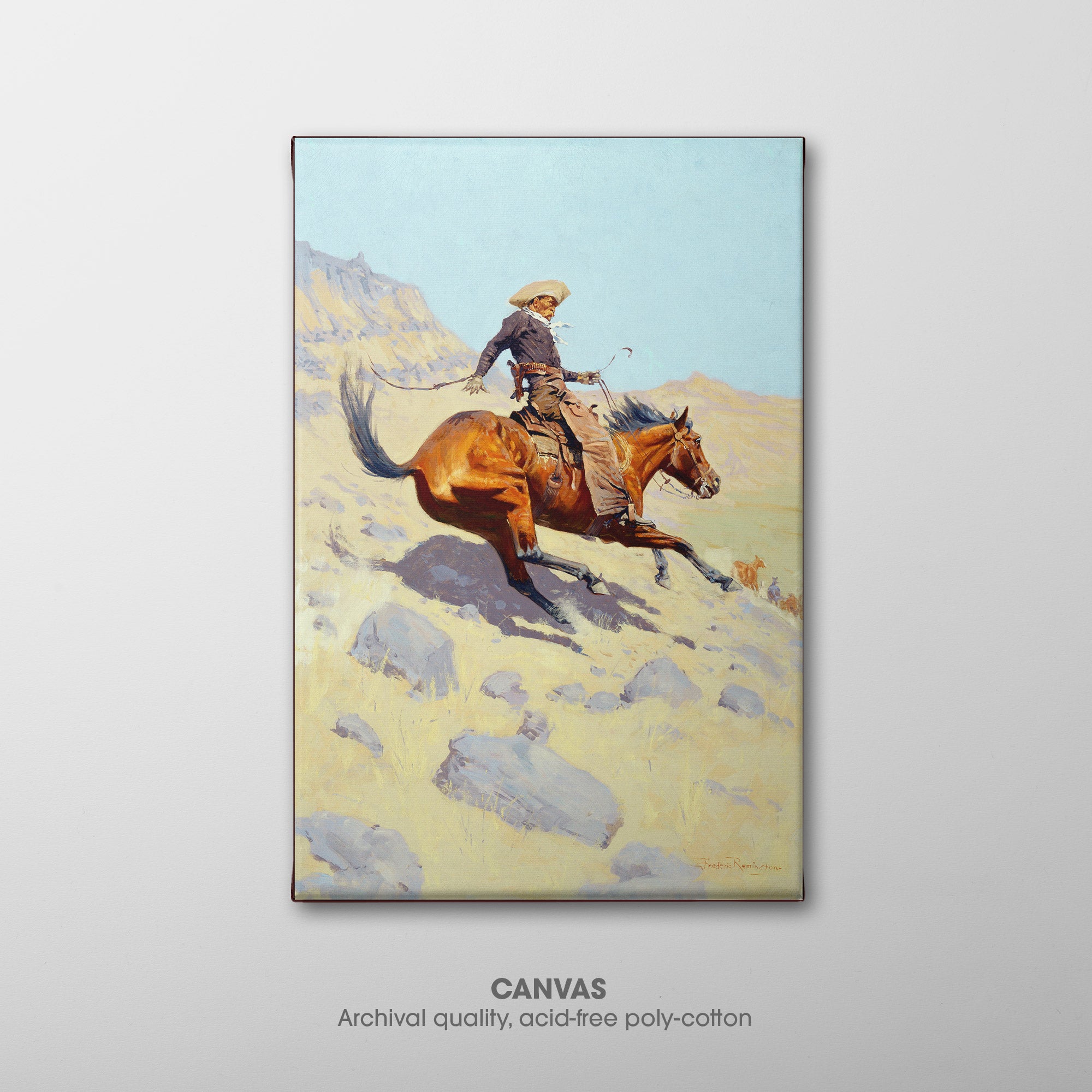
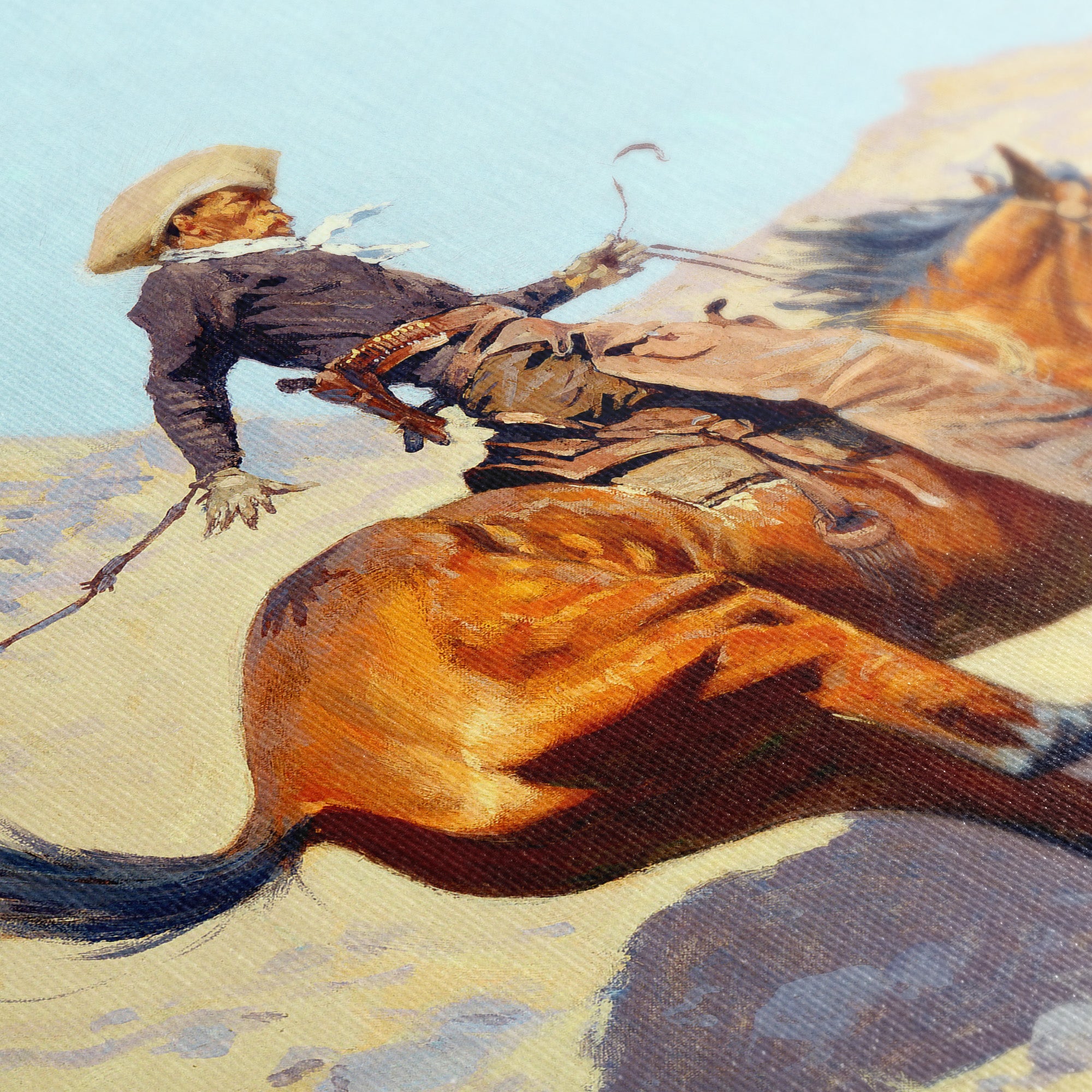 The Cowboy (1902) by Frederic Remington depicts cowboy riding a horse down a steep, rocky incline. A solitary, heroic figure, symbol of the American West, the cowboy is attired in a wide-brimmed hat, chaps, and boots. Remington's fluid brushwork and focus on ➵
The Cowboy (1902) by Frederic Remington depicts cowboy riding a horse down a steep, rocky incline. A solitary, heroic figure, symbol of the American West, the cowboy is attired in a wide-brimmed hat, chaps, and boots. Remington's fluid brushwork and focus on ➵◰ Canvas Reproductions
⧈ Framed Art Prints -
The Old Stage-Coach of the Plains ☵ Remington ☳ Canvas
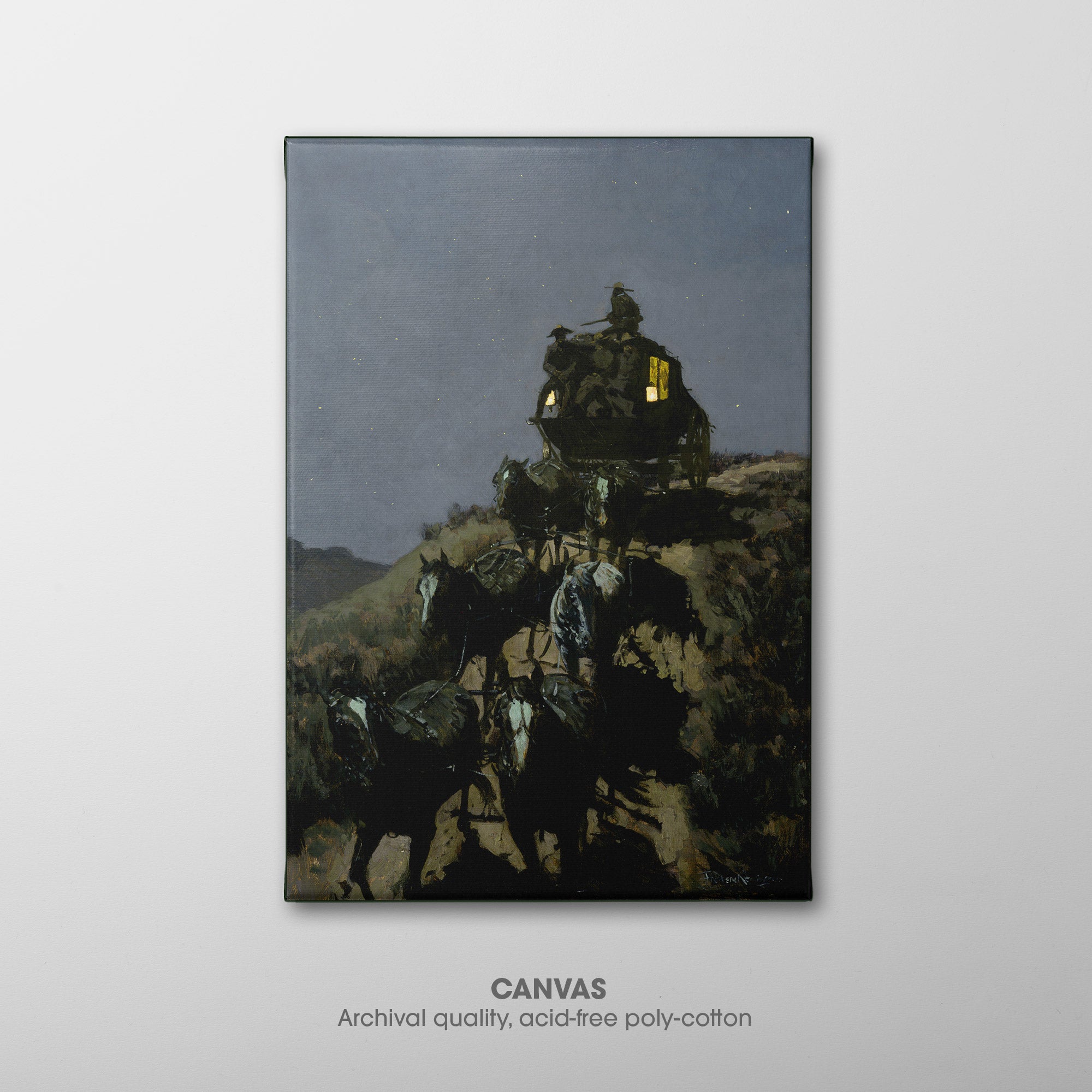
 The Old Stage-Coach of the Plains (1901) by Frederic Remington depicts a stagecoach led by a team of six horses, descending a steep slope, while a lookout on top of the coach, rifle in hand, looks back towards some unseen danger. The ➵
The Old Stage-Coach of the Plains (1901) by Frederic Remington depicts a stagecoach led by a team of six horses, descending a steep slope, while a lookout on top of the coach, rifle in hand, looks back towards some unseen danger. The ➵◰ Canvas Reproductions
⧈ Framed Art Prints -
An Indian Trapper ☴ Remington ☶ Canvas

 An Indian Trapper (1889) by Frederic Remington depicts a Native American man on horseback, holding a rifle, looking back down the mountain trail he is traveling. Farther up the trail are two others on horseback, transporting animal carcasses from a successful hunt. ➵
An Indian Trapper (1889) by Frederic Remington depicts a Native American man on horseback, holding a rifle, looking back down the mountain trail he is traveling. Farther up the trail are two others on horseback, transporting animal carcasses from a successful hunt. ➵◰ Canvas Reproductions
⧈ Framed Art Prints -
The Blanket Signal ☴ Remington ☷ Canvas
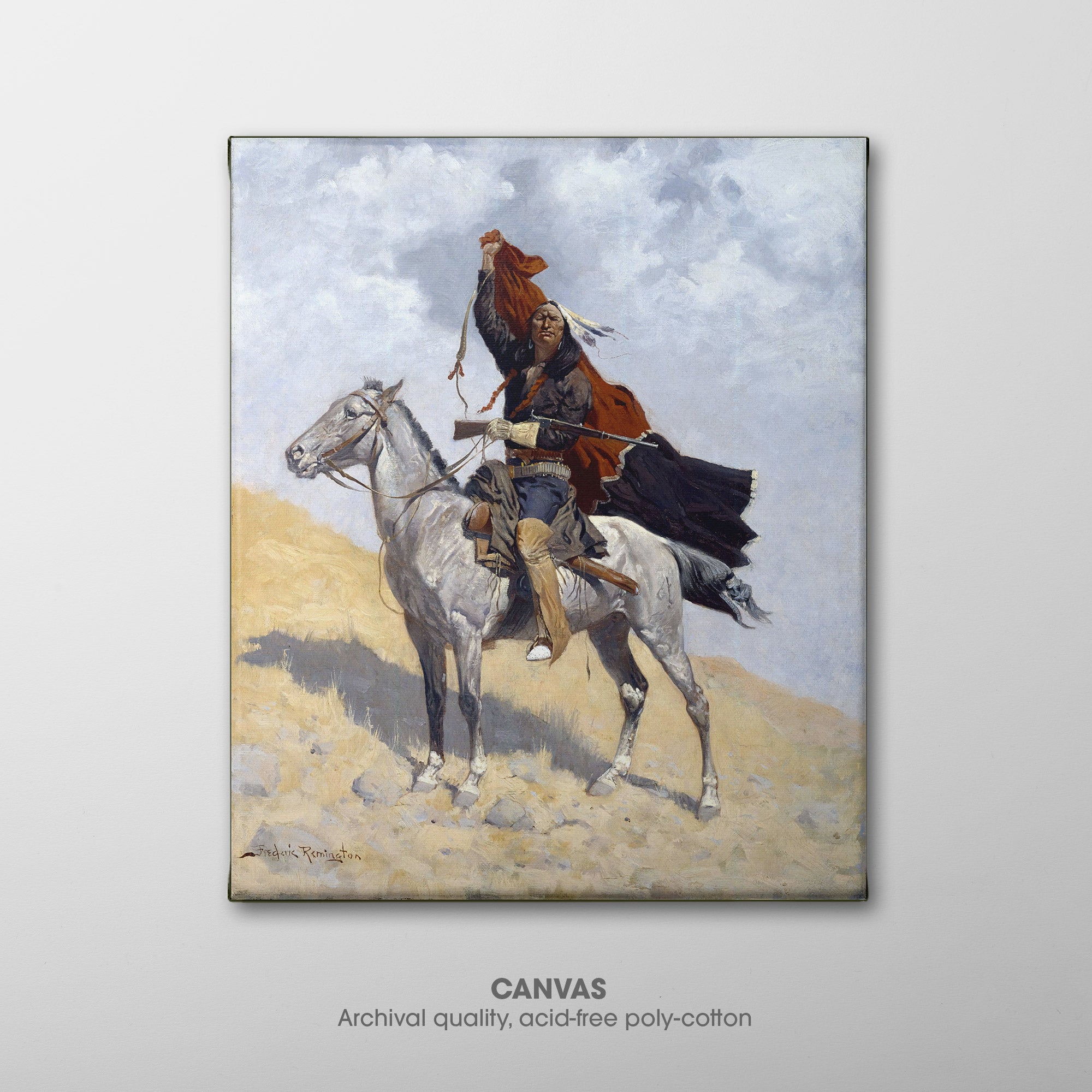
 The Blanket Signal (1896) by Frederic Remington depicts an Indian scout on horseback, holding a rifle and using a large, colorful blanket, to signal fellow tribesmen. The attention to detail in clothing and artifacts, and the dramatic composition against the land and ➵
The Blanket Signal (1896) by Frederic Remington depicts an Indian scout on horseback, holding a rifle and using a large, colorful blanket, to signal fellow tribesmen. The attention to detail in clothing and artifacts, and the dramatic composition against the land and ➵◰ Canvas Reproductions
⧈ Framed Art Prints -
Blue and Silver, Chelsea ☱ Whistler ☱ Canvas
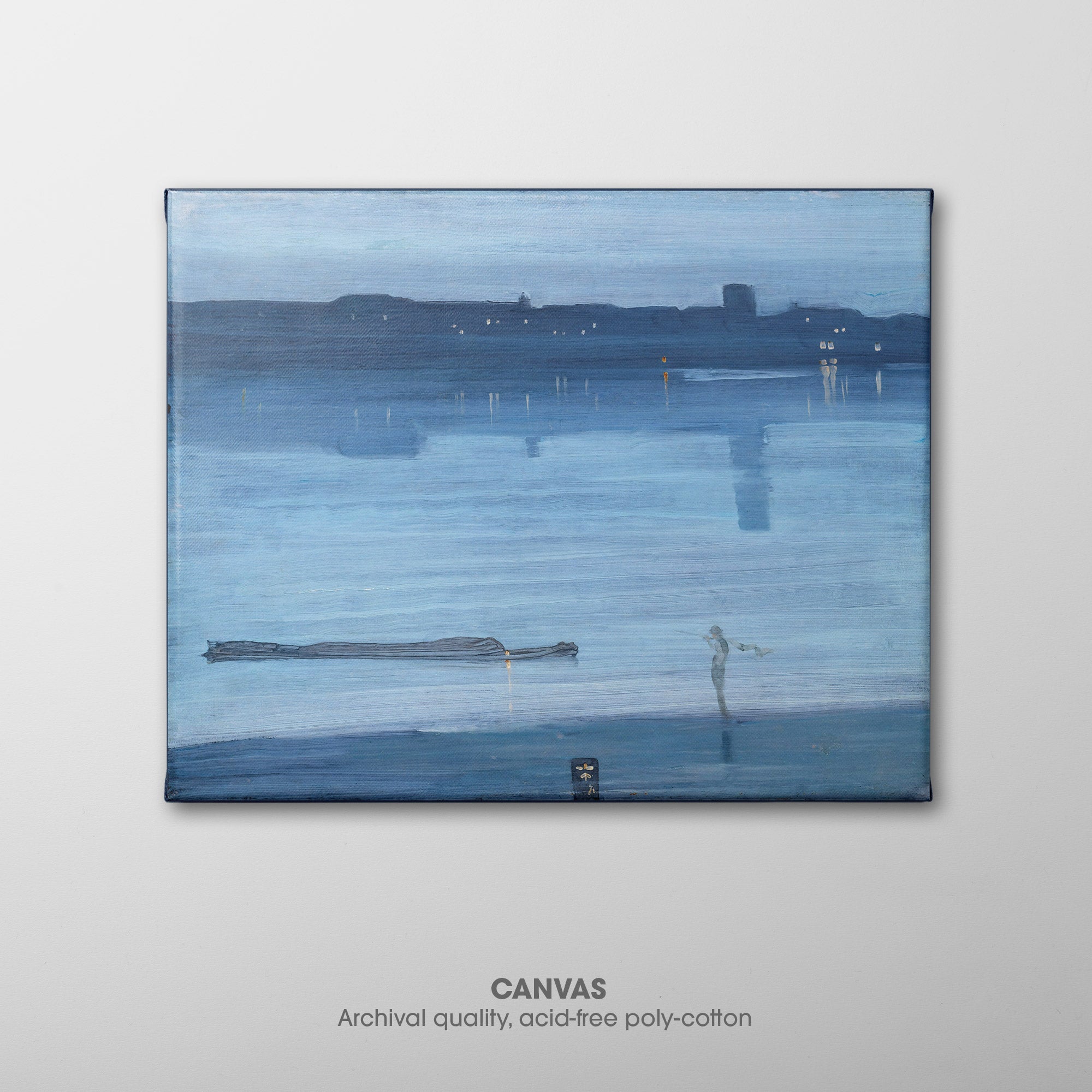
 Nocturne: Blue and Silver, Chelsea (1871) by James McNeill Whistler is a view from Battersea Bridge looking across the Thames towards Chelsea. The tower of Chelsea Old Church is visible on the right, and a fisherman stands in the foreground. This is ➵
Nocturne: Blue and Silver, Chelsea (1871) by James McNeill Whistler is a view from Battersea Bridge looking across the Thames towards Chelsea. The tower of Chelsea Old Church is visible on the right, and a fisherman stands in the foreground. This is ➵◰ Canvas Reproductions
⧈ Framed Art Prints -
The Falling Rocket ☰ Whistler ☲ Canvas

 Nocturne in Black and Gold: The Falling Rocket (1877) by James McNeill Whistler depicts a fireworks display in the foggy night sky, inspired by Cremorne Gardens, a celebrated resort in Chelsea, London. John Ruskin, a leading art critic of the Victorian era, ➵
Nocturne in Black and Gold: The Falling Rocket (1877) by James McNeill Whistler depicts a fireworks display in the foggy night sky, inspired by Cremorne Gardens, a celebrated resort in Chelsea, London. John Ruskin, a leading art critic of the Victorian era, ➵◰ Canvas Reproductions
⧈ Framed Art Prints -
Self-Portrait ☶ Whistler ☰ Canvas
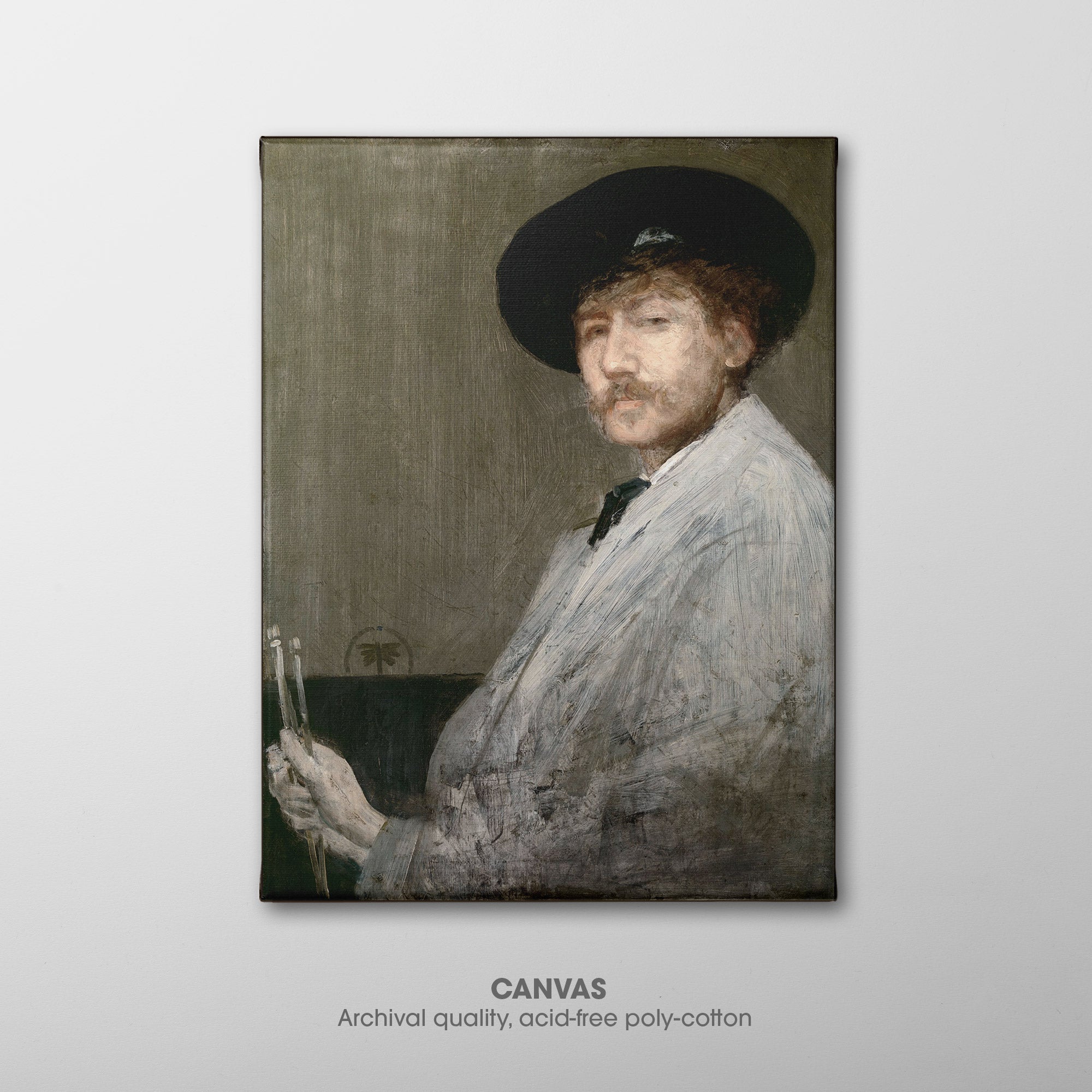
 Arrangement in Gray, Portrait of the Painter (1872) by James McNeill Whistler depicts the artist in his painters smock holding brushes. His signature butterfly is prominently featured, first developed in the 1860s out of his interest in Asian art. The stylized butterfly ➵
Arrangement in Gray, Portrait of the Painter (1872) by James McNeill Whistler depicts the artist in his painters smock holding brushes. His signature butterfly is prominently featured, first developed in the 1860s out of his interest in Asian art. The stylized butterfly ➵◰ Canvas Reproductions
⧈ Framed Art Prints -
Princess from the Land of Porcelain ☲ Whistler ☱ Canvas

 Rose and Silver: The Princess from the Land of Porcelain (1864) by James McNeill Whistler depicts a European woman wearing a kimono in a Western manner, holding a fan, standing amidst numerous Asian art objects, including a rug, Japanese folding screen and ➵
Rose and Silver: The Princess from the Land of Porcelain (1864) by James McNeill Whistler depicts a European woman wearing a kimono in a Western manner, holding a fan, standing amidst numerous Asian art objects, including a rug, Japanese folding screen and ➵◰ Canvas Reproductions
⧈ Framed Art Prints -
The Fall of the Cowboy ☰ Remington ☶ Canvas

 The Fall of the Cowboy (1895) by Frederic Remington depicts two cowboys at the gate of a barbed wire fence, a ranching technology that beginning in the 1870s signaled the end of cowboy life. It divides the painting in half, symbolically fencing ➵
The Fall of the Cowboy (1895) by Frederic Remington depicts two cowboys at the gate of a barbed wire fence, a ranching technology that beginning in the 1870s signaled the end of cowboy life. It divides the painting in half, symbolically fencing ➵◰ Canvas Reproductions
⧈ Framed Art Prints -
The Outlier ☰ Remington ☳ Canvas

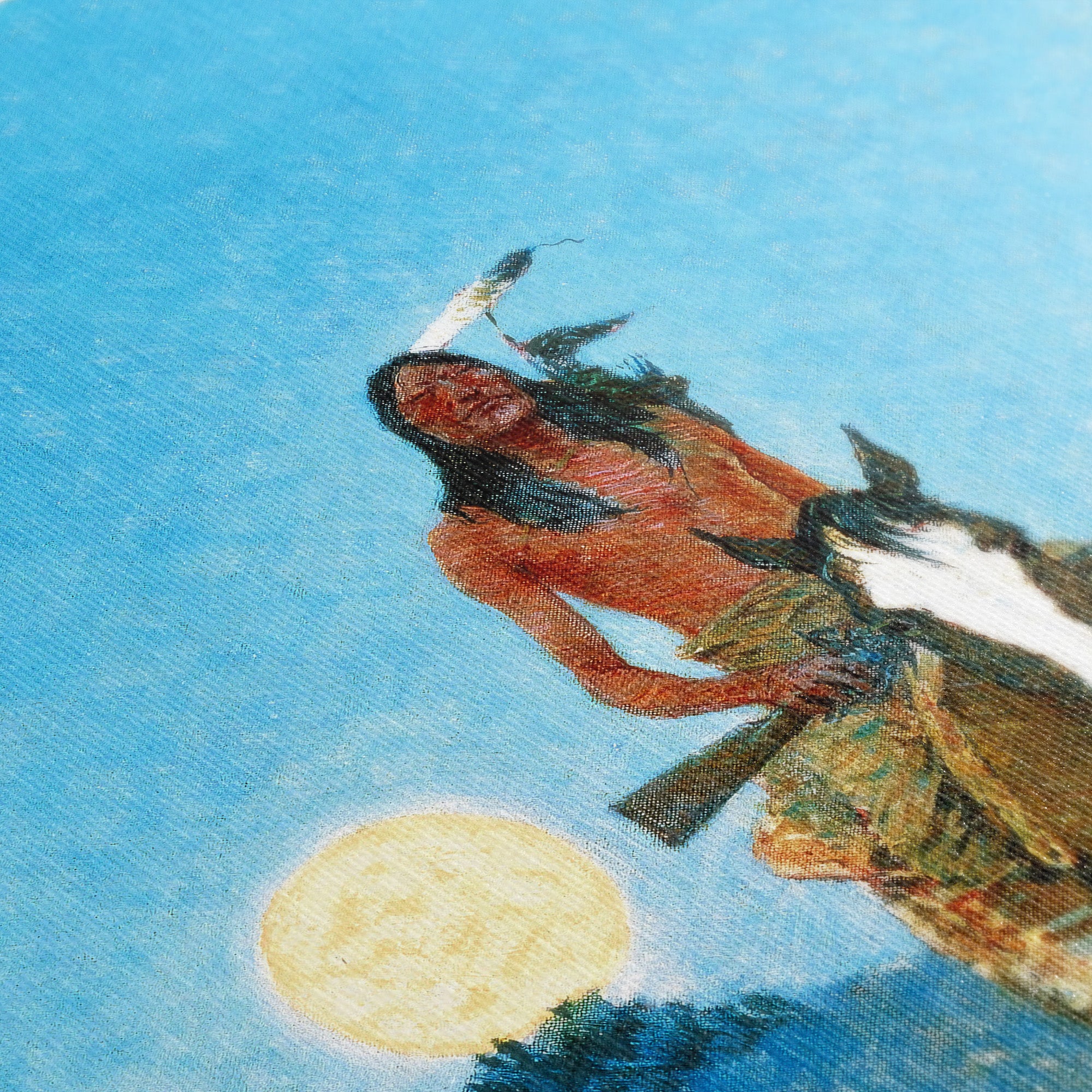 The Outlier (1909) by Frederic Remington is one of the last works he completed before his death in 1909. It depicts a Native American man alone in the wilderness on horseback, rifle in hand, with the sun setting behind him. The United ➵
The Outlier (1909) by Frederic Remington is one of the last works he completed before his death in 1909. It depicts a Native American man alone in the wilderness on horseback, rifle in hand, with the sun setting behind him. The United ➵◰ Canvas Reproductions
⧈ Framed Art Prints -
Symphony in White No. 1 ☴ Whistler ☲ Canvas

 Symphony in White No. 1 (1862) by James McNeill Whistler, was originally called The White Girl. Whistler later called it Symphony in White, No. 1 to emphasize his "art for art's sake" philosophy. The painting was created as a simple study in ➵
Symphony in White No. 1 (1862) by James McNeill Whistler, was originally called The White Girl. Whistler later called it Symphony in White, No. 1 to emphasize his "art for art's sake" philosophy. The painting was created as a simple study in ➵◰ Canvas Reproductions
⧈ Framed Art Prints -
Whistler's Mother ☶ James McNeill Whistler ☷ Canvas

 Arrangement in Grey and Black No. 1 (1871) by James McNeill Whistler, best known as Whistler's Mother, or Portrait of the Artist's Mother, is one of the most famous works outside the United States by an American artist. When first exhibited, the ➵
Arrangement in Grey and Black No. 1 (1871) by James McNeill Whistler, best known as Whistler's Mother, or Portrait of the Artist's Mother, is one of the most famous works outside the United States by an American artist. When first exhibited, the ➵◰ Canvas Reproductions
⧈ Framed Art Prints


































